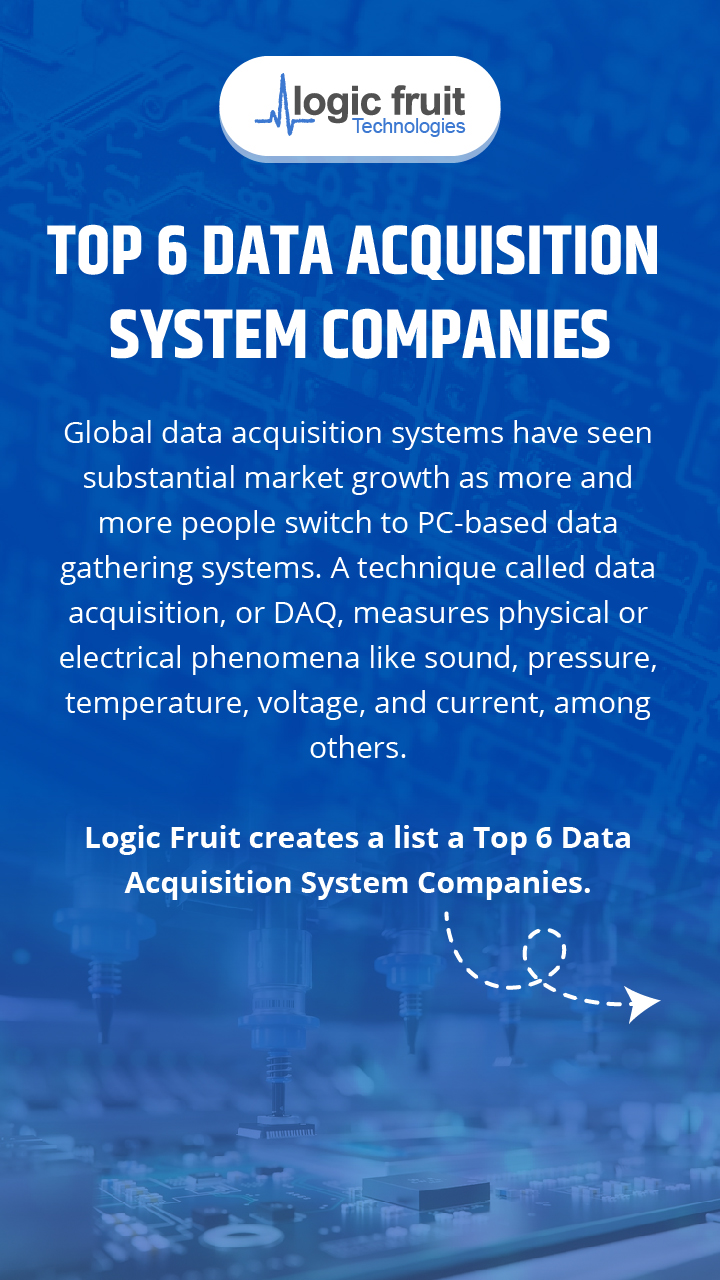Unleashing the Power of Precision: A Deep Dive into Data Acquisition Systems
Unleashing the Power of Precision: A Deep Dive into Data Acquisition Systems
Blog Article

In today's data-driven world, the ability to gather and analyze information accurately is paramount across various industries. At the heart of this process lies the Data Acquisition System, a vital tool that enables the seamless collection, measurement, and analysis of data from diverse sources. From scientific research labs to industrial environments, these systems provide the foundational backbone for effective decision-making and operational efficiency.
As we dive deeper into the capabilities and functionalities of Data Acquisition Systems, it becomes clear that they are not just instruments for data collection; they are powerful enablers of insight and innovation. By harnessing the strengths of modern technology, these systems facilitate real-time monitoring, precise measurement, and comprehensive analysis, ultimately empowering organizations to unlock the full potential of their data assets. Understanding how these systems work and their impact on various fields can significantly enhance both productivity and knowledge.
Understanding Data Acquisition Systems
Data Acquisition Systems are vital tools in various fields, enabling the collection and analysis of data from different sources. These systems transform real-world signals—such as temperature, pressure, and voltage—into digital data that can be processed and analyzed. By bridging the gap between the physical world and the digital realm, data acquisition systems facilitate informed decision-making and enhance the understanding of complex processes.
At the core of any data acquisition system is hardware that consists of sensors, signal conditioning units, and data converters. Sensors capture the physical phenomena and convert them into electrical signals. Signal conditioning is essential for filtering and amplifying these signals to ensure accuracy before they are digitized by Analog-to-Digital Converters. This process forms the backbone of data acquisition, making it crucial for industries like manufacturing, research, and environmental monitoring, where precision is imperative.
Software forms an integral part of a data acquisition system, allowing users to configure the hardware, visualize real-time data, and store recorded data for further analysis. Advanced software tools offer sophisticated analysis techniques, enabling users to derive insights that can lead to improved performance and optimization of processes. As technology advances, data acquisition systems continue to evolve, offering enhanced capabilities to meet the demands of emerging applications and industries.
Components of a Data Acquisition System
A Data Acquisition System is comprised of various essential components that work together to collect and process data. The primary elements include sensors or transducers, which convert physical phenomena such as temperature, pressure, or light into electrical signals. These sensors are critical as they provide the raw data necessary for analysis and monitoring. The choice of sensor depends largely on the specific application and the nature of the data required.
Once the data is captured by sensors, it is typically conditioned before being transmitted for further processing. Signal conditioning involves amplifying, filtering, or otherwise modifying the raw signals to optimize them for measurement and analysis. This stage is crucial because it enhances the quality of the data, ensuring accuracy and reliability. The conditioned signals are then sent to an Analog-to-Digital Converter (ADC), which translates the analog signals into digital form for processing and storage.
The final component of a Data Acquisition System is the data processing unit, which often consists of a computer or embedded system. This unit not only processes the digital signals but also allows for data storage, analysis, and visualization. Advanced software tools aid in interpreting the data, providing insights that can drive decision-making. This integration of hardware and software is vital for creating a cohesive system capable of delivering meaningful results across various applications.
Get The Best Price
Applications and Benefits of Data Acquisition Systems
Data Acquisition Systems are widely used across various industries, providing critical support for data collection and analysis. In manufacturing, these systems monitor equipment performance, track production processes, and ensure product quality by capturing real-time data. This capability helps in identifying inefficiencies and minimizing downtime, ultimately leading to enhanced productivity and cost savings.
In the field of environmental monitoring, Data Acquisition Systems are essential for collecting data on air quality, water quality, and other environmental parameters. These systems facilitate compliance with regulatory requirements and enable organizations to respond swiftly to changes in environmental conditions. By providing accurate and timely data, they support decision-making processes that protect public health and the environment.
Moreover, research and development greatly benefit from Data Acquisition Systems, as they allow scientists and engineers to gather precise measurements during experiments. Whether in the laboratory or in the field, these systems enable detailed analysis of complex phenomena, driving innovation in sectors such as healthcare, aerospace, and energy. The ability to acquire data efficiently fosters advancements that can lead to groundbreaking discoveries and improved technologies.
Report this page